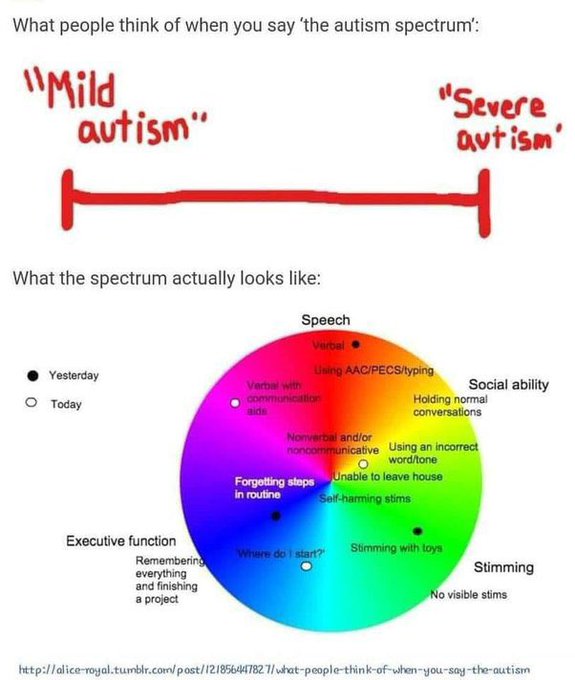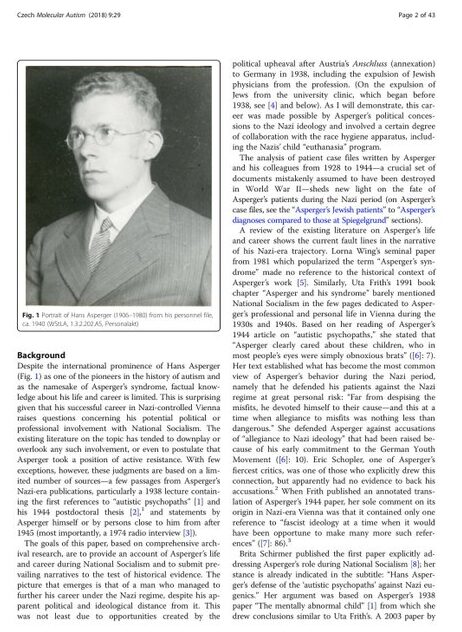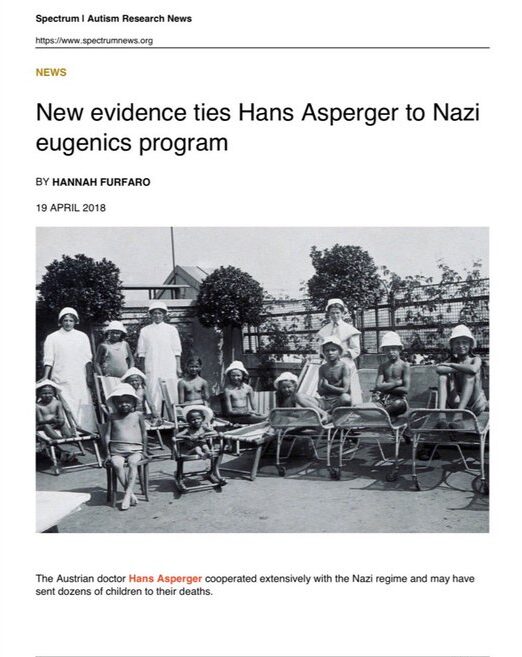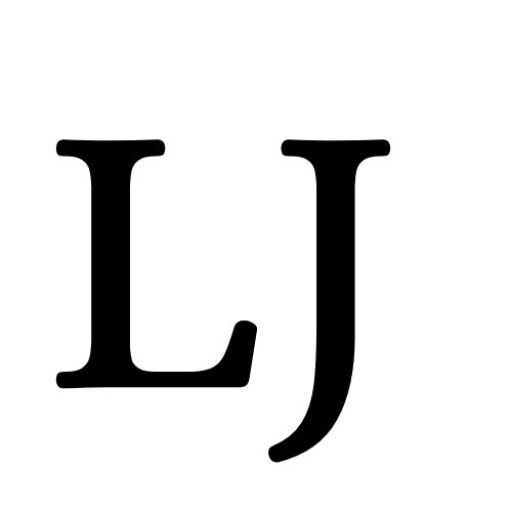Breaking Stereotypes: The Intersection of Autism, ADHD, and Black Identity

As a published author, my writings are copyrighted and tracked.
You may cite me, Lovette Jallow ©, but any use of my words without explicit permission is strictly prohibited.
Understanding Neurodiversity vs. Neurodivergent
Autism is often misunderstood, leading to harmful stereotypes and biases. People think the spectrum is a line when it’s a circle. As someone diagnosed with level one autism (previously known as Asperger’s Syndrome), I have experienced these misconceptions firsthand. I am considered to have no intellectual disabilities and need low or no support. However, the “low/no support” label is debatable.
In this article, I aim to challenge outdated perspectives and highlight the importance of embracing human neuro-diversity.
Let’s start with the word that people get confused: Neurodiversity refers to the concept that variation in brain function and behavioral traits is a normal and valuable aspect of human diversity. Everyone has a unique neurotype, meaning we all have different ways of thinking, learning, and processing information. Just as biodiversity values the variety of life forms, neurodiversity values the diversity of human minds. It recognizes that conditions like autism, ADHD, dyslexia, and others are natural variations in the human genome. Society decided one form over others and everyone outside that is considered Neurodivergent. The spectrum of autism is nuanced and multifaceted, meaning there is no single way that autism presents itself. Unlike a straightforward line with “mild” at one end and “severe” at the other, the autism spectrum is better visualized as a circular spectrum. This circular spectrum depicts the complex and varied nature of autism, illustrating different aspects such as speech, social ability, executive function, and stimming.

The Myth of Intelligence
Too often, society equates verbal communication with intelligence. This narrow view fails to recognize the richness of non-verbal communication and the unique ways autistic individuals express themselves. If someone doesn’t understand how an individual is communicating non-verbally, they might wrongly deem them as having a low IQ. However, the real issue lies in their inability to grasp more than verbal communication. Labeling someone based on their communication style reflects more about the labeler’s limitations than the individual’s abilities. Research supports this view, indicating that traditional IQ tests and assessments do not fully capture the cognitive strengths of autistic individuals (American Journal of Medical Genetics Part C: Seminars in Medical Genetics).
White Supremacy and Its Narrow Lens on Neurodiversity
White supremacy has historically marginalized anything it doesn’t understand, labeling it as “sub” or “divergent.” This perspective is also evident in how autistic individuals are often misjudged. For instance, people like myself who speak multiple languages and exhibit strong verbal skills might still shut down that part and communicate in other ways, yet this is labeled as divergent simply because it doesn’t fit society’s narrow understanding. Every time white supremacy encounters something it doesn’t understand, it ensures, in its mediocrity, to label it. Every time neurotypical brains encounter someone outside their narrow definitions and are too lazy to learn and unpack, they also label it as less than.
If you can’t learn a skill like math or carpentry, is it the skill’s fault? It may not even be your fault. However, if you blame the skill for your inability to grasp a talent or nuance, then you are the one who needs to unpack your own limitations and biases. One’s inability to grasp a talent or nuance doesn’t mean the skill or concept itself is at fault.
The real problem is one’s own lack of range in understanding, not the differences themselves. This narrow view limits our understanding and appreciation of diverse forms of intelligence. White supremacy has a track record of changing labels to fit its narrow view, and its understanding of intelligence across various continents and indigenous peoples is subpar at best. It’s time to challenge these outdated perspectives and broaden our understanding of communication and intelligence.
The Challenges and Strengths of Autistic Individuals
Autistic individuals often face challenges in social interactions and communication, which are frequently misunderstood. For example, once I posted this, I understood that far more than myself are often told from childhood that they are the “smartest stupid person” someone knows. This implies we can excel in our interests but overlook things others take for granted—sometimes with harmful or dangerous consequences. Speaking from my diagnosis of level one autism, I know these consequences all too well.
Despite these challenges, autistic individuals often have unique strengths. Many have intense focus on the topics and work that interests them. Specific interests, known as “special interests,” which can be a source of deep knowledge and skill if it aligns with your work. This intense focus often leads to remarkable achievements in various fields, showcasing the unique strengths of autistic individuals. I realized late that my childhood fascination with understanding, analyzing, and integrating data with the human aspect to achieve fairness and equity was a special interest of mine. I excel at advocating for people and amplifying voices in a way that others can understand. I often joke that this is why I speak so many languages and write extensively. However, I am still misunderstood because the lenses through which others perceive my intersecting identities are often clouded.

But since people behave towards autistics in the same manner as white supremacy, let’s look at the roots of autism level one Asperger’s. Today we call it level one in Swedish DSM diagnosis. It just means we can produce enough output to be considered close to neurotypical standards… but not quite, but still good enough. Hans Asperger, who first identified what was then called Asperger’s Syndrome, noted that individuals on the autism spectrum often have remarkable abilities in specific areas. However, it is crucial to recognize that Asperger’s contributions are tainted by his involvement in the Nazi regime’s eugenics programs during the Second World War. Asperger was known to have sent children he deemed less capable to their deaths, a dark aspect of his legacy that must be acknowledged. This historical context highlights how the origins of autism research are intertwined with white supremacy and the atrocities of the Holocaust. Despite this problematic history, the concept of “special interests” highlights how autistic individuals can drive productivity and innovation, making them valuable assets in the workplace when their strengths are properly understood and catered to as well. But what do we get back? What do workplaces and society as a whole do to adapt themselves to us as human beings worthy of being considered?

Decoding Social Interactions
See where I reside on the spectrum, I often take people and situations at face value, believing what someone presents and says is who they are—until a long series of their actions don’t align with their words. For many autistics, this is the case. For instance, a company might state in their policies that they work towards diversity, inclusion, equity, and belonging, yet after many years, you do not feel like you belong. People in my life will often pick up on these discrepancies before I do. Some call it naivety, but it’s just part of the autism experience. Studies show that autistics can struggle with social cues and interpreting intentions (Journal of Autism and Developmental Disorders). This is just part of the autistic experience and human neurodiversity.
I may not be alert to it in the moments I believe the intentions stated, but my brain is always collating data. Once I recognize patterns and see the disconnect between a person’s or company’s words and actions, I start doing the math. I aim to clarify the situation and find a solution for both parties. Pattern recognition is a strong suit of mine, as is conflict resolution. When it kicks in, it’s hard to argue against it. I only ask questions to clarify, and people often trip themselves up with their own words. While some humans may lack self-awareness, it’s truly despicable to project one’s own issues and exploit the trust and sensitivity of autistic individuals.
This is far from being a vulnerability but a sign (to me personally) that this world can still be improved, and words should align with actions consistently.
Black Autistic and ADHD Experiences in the Corporate World
Here are some specific examples of social cues and discrepancies in the workplace:
- Company Diversity Policies: A company states in their policies that they work towards diversity, inclusion, equity, and belonging, yet after many years, you do not feel like you belong. This disconnect between stated values and actual experience can be particularly disheartening for neurodivergent individuals who rely on clear and consistent communication. (written about here:https://lovettejallow.com/dei/performative-deib-post-george-floyd/)
- Hybrid Work Arrangements: A company states you can work hybrid as your work isn’t dependent on being in an office, and suddenly changes this to demand everyone in, with no regard for your sensory issues and the fact that you work better focused out of the office. This abrupt change can significantly impact your productivity and well-being, highlighting a lack of understanding and accommodation for neurodivergent needs.
- After-Work Events: After a long day of masking to fit into a neurotypical environment, you may need rest rather than socializing. Not attending after-work events due to this need for rest often leads to being unfairly judged or even punished, showing a lack of understanding of the demands placed on neurodivergent individuals throughout the workday.
- Cultural Insensitivity:For instance, workplaces discussing sexism might allow a white woman to violate a Black woman’s space by touching her hair and then penalize the Black woman for reacting. This implies that she is neither a woman nor one to be respected, demonstrating a severe lack of intersectional understanding.(written about here:Lovette Jallow’s Insight into Black Women and the Natural Hair Movement in Corporate EnvironmentsLovette Jallow’s Insight into Black Women and the Natural Hair Movement in Corporate Environments)
My ability to see these discrepancies from an outside viewpoint, backed by data and 15 years working in corporate environments (lived experiences), is why I am good at my job as a consultant working with workplace adaptations. I help companies understand the misalignment between their policies and practices and assist employees in communicating their needs. This not only benefits the employees, who may like their work but struggle due to inadequate support, but also helps companies meet these often basic and low-cost needs, preventing illness, further disability, and discomfort. When someone is employed and is an asset to you, you must do your due diligence and take the steps to understand their needs and communication. Especially when you know their adapting to you to make you profits further disables them. Fair exchanges or not? When you also acknowledge that you lack the ability to understand this yourself, you get help and assistance to do so. Just like you do not go to your Black employees and ask them to educate you on racism, you also do not place more vigor on your autistic/ADHD or close-to-burnout employees to do that work for you in addition to their workload.
Invest in their wellbeing as you profit off their work. That is true equity.
The Necessity of Self-Awareness and Inclusivity
Understanding begins with recognizing our own biases and expanding our range. We need to challenge outdated perspectives and broaden our understanding of communication and intelligence. Diversity in thought and expression is a strength, not a weakness. By expanding our range of understanding, we can appreciate the full spectrum of human intelligence and communication. It’s time to move beyond labels and embrace true inclusivity.
Let’s work on our own limitations rather than imposing them on others. Studies show that autistics, like myself, can struggle with social cues and interpreting intentions (Journal of Autism and Developmental Disorders). However, this does not diminish our intelligence or value as human beings. Instead, it underscores the need for society to be more inclusive and understanding.
We live in a society where people often do not say what they mean or show their intentions clearly. Humans who rely on words aligning with actions will struggle, and why shouldn’t we struggle when words should consistently align with actions to be truthful? But what do we diagnose in those who lack the cognitive flexibility to comprehend others and unwilling to learn beyond stereotypes?
I work with companies that struggle to see and understand this even if their neurodivergent (autistic/ADHD) employees enjoy their job. They lack adaptations to belong and feel included and understood. They adapt and mask to the point of depression and burnout. Masking impacts individuals significantly, just as Black employees adapt and code-switch to belong. I am both, and I will over the next weeks share how this impacted me in previous workplaces with case studies.
Moving Towards True Inclusivity
It’s time for society to reevaluate its approach to neurodiversity. Instead of imposing narrow-minded labels, we should embrace the unique strengths and perspectives of autistic individuals. Someone else is not less than because you do not understand them or their communication mode. That’s a you problem.
By challenging stereotypes and promoting inclusivity, we can create a more understanding and accepting world for everyone. Autism affects more people than most realize, and each person has their own strengths, challenges, and disabilities. It’s crucial to move beyond the labels and start looking at how society can also adapt and appreciate the diverse ways in which people communicate and think.
Lovette Jallow is a trailblazing leader in antiracism advocacy and neurodiversity awareness. An 8-time award-winning lecturer and inclusion strategist, Lovette has delivered over 400 lectures worldwide, collaborating with municipal and government bodies, Fortune 500 companies, and non-profits to make a global impact.
As the bestselling author of “Black Vogue – Shades of Beauty” and “Främling i Vita Rum (Stranger in White Spaces),” Lovette has transformed the beauty industry and highlighted the challenges faced by marginalized communities in Sweden. Her commitment to equality and justice is unwavering, reaching over 8 million individuals across all platforms.
In addition to her advocacy and educational work, Lovette founded Action for Humanity in 2017 to provide aid for refugees and address human rights issues. The organization has grown substantially, focusing on spreading awareness about structural racism, providing safe spaces for marginalized groups, and offering support through legal guidance, financial aid, and educational programs. Projects include the successful repatriation of 38 Gambian women and children from Lebanon and ongoing support for marginalized communities in Sweden.
For further insights and to keep the conversation going, visit her website and learn more.


